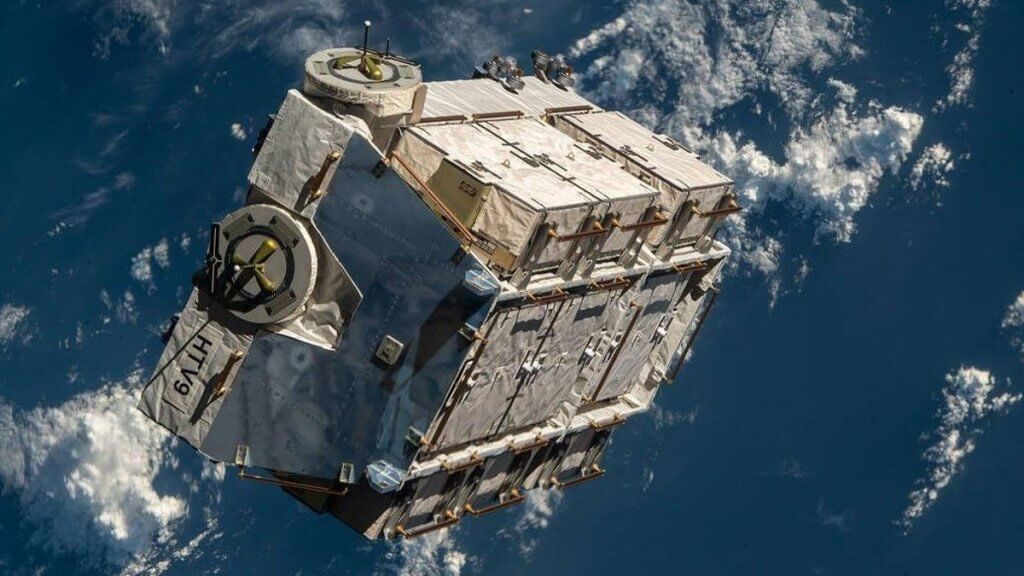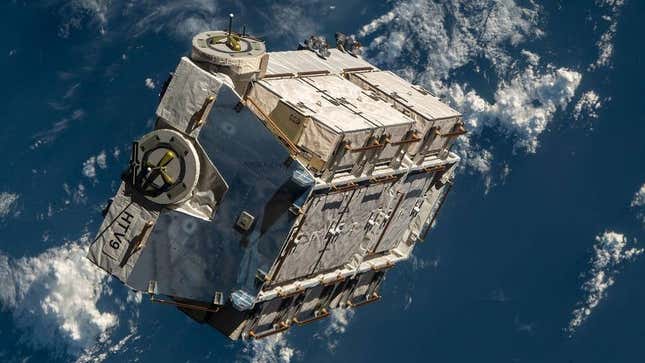NASA Is Being Sued for Dropping Space Junk on a Florida Home

NASA Is Being Sued for Dropping Space Junk on a Florida Home (Image Credit: Gizmodo-com)

A family from Florida filed a claim against NASA for a small piece of trash that the space agency had tossed from the International Space Station (ISS), which ended up in their home.
Earlier this year, a two-pound cylindrical-shaped object crashed through the roof of a family home in Naples, Florida, creating a hole in the ceiling and the floor. The incident coincided with the reentry of a massive pallet of old batteries from the ISS, which plummeted through the atmosphere on the same day over the Gulf of Mexico, ultimately heading toward southwest Florida.
The homeowner reported the incident and NASA retrieved the object for analysis. In April, the space agency confirmed that, upon studying the object’s dimensions and features, it was indeed a fragment from the flight support equipment used to mount the batteries on the cargo pallet.
“Space debris is a real and serious issue because of the increase in space traffic in recent years,” Mica Nguyen Worthy, the family’s attorney, said in a statement. “My clients are seeking adequate compensation to account for the stress and impact that this event had on their lives. They are grateful that no one sustained physical injuries from this incident, but a ‘near miss’ situation such as this could have been catastrophic.”
The son of homeowner Alejandro Otero was home alone at the time, but he luckily did not sustain any injuries. The piece of debris left a hole from the roof through the sub-flooring, according to Worthy. The family is seeking compensation for property damage, emotional and mental anguish, and the costs for assistance from third parties required in the process.
The cargo pallet contained nine batteries and weighed roughly 5,800 pounds, making it the heaviest piece of trashed tossed from the ISS. It had been thrown out by the Canadarm2 robotic arm in March 2021 and left to tumble towards Earth in an uncontrolled reentry. The chaotic fall from orbit finally came to an end when the cargo pallet reentered on March 8 around 3:29 p.m. ET somewhere above the Gulf of Mexico.
NASA had anticipated that the entire pallet would burn up upon reentry through Earth’s atmosphere, and the chances of fragments surviving the heat and landing in an inhabited area were rather slim but apparently not zero. On average, 200 to 400 human-built objects reenter through Earth’s atmosphere every year, and space agencies commonly accept a 1 in 10,000 probability threshold for the casualty risk of a single uncontrolled reentry, according to the European Space Agency.
“NASA remains committed to responsibly operating in low Earth orbit, and mitigating as much risk as possible to protect people on Earth when space hardware must be released,” the space agency wrote in an earlier statement.
The ongoing case is a rare incident of space debris crashing on personal property, and it’s certainly the first time NASA has been called out for being an irresponsible litterer. It’s more likely that the space agency will compensate the family, and this case will set a precedence as Earth orbit continues to be littered with space junk.
For more spaceflight in your life, follow us on X and bookmark Gizmodo’s dedicated Spaceflight page.








